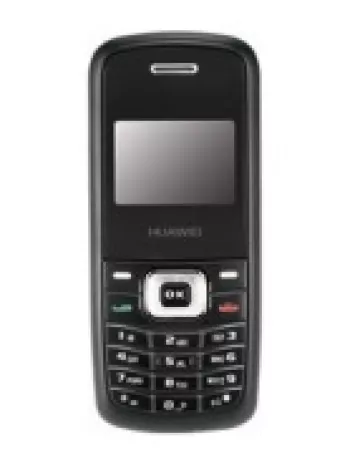
Overview of Huawei G9 Plus
The Huawei G9 Plus, launched in August 2016, represents a blend of advanced technology and sophisticated design, aimed at users seeking a mid-range smartphone experience. Although it has been discontinued, it remains memorable for its balanced capabilities and cost-effectiveness at the time of release.
Design and Build
Elegantly crafted, the Huawei G9 Plus maintains a sleek profile with dimensions of 151.8 x 75.7 x 7.3 mm and a weight of 160 grams. The device provides a comfortable grip and a sophisticated look with its slim build, making it easy for users to handle. It supports a hybrid dual SIM slot, allowing users the flexibility of dual standby.
Display
The smartphone features a 5.5-inch IPS LCD, with a resolution of 1080 x 1920 pixels. This results in a crisp display with a pixel density of approximately 401 ppi, ensuring clarity and vibrancy, whether browsing through photos or watching videos. The screen-to-body ratio of around 72.6% maximizes viewing area without increasing the device's overall size.
Performance
Under the hood, the Huawei G9 Plus is powered by the Qualcomm Snapdragon 625 chipset, which utilizes a 14nm process. This efficient configuration is paired with an Octa-core 2.0 GHz Cortex-A53 CPU and an Adreno 506 GPU, providing robust performance for everyday tasks and moderate gaming. The device originally shipped with Android 6.0 Marshmallow, layered with Huawei's EMUI 4.1, offering a user-friendly interface and additional features for enhanced usability.
Memory and Storage
The device offers flexibility with various memory configurations, including 32GB of internal storage paired with either 3GB or 4GB of RAM, as well as a version with 64GB of storage and 4GB of RAM. Additionally, the storage capacity can be expanded using a microSDXC card, which shares the SIM slot, providing users with ample space for apps, media files, and more.
Camera Capabilities
Photography enthusiasts will appreciate the Huawei G9 Plus's camera capabilities. The main camera is a 16 MP sensor with features like phase detection autofocus (PDAF), optical image stabilization (OIS), and a dual-LED dual-tone flash. It supports video recording at 4K@30fps and 1080p@30fps, offering high-quality video capture. The selfie camera is an 8 MP sensor, capable of recording 1080p videos at 30fps.
Audio and Communication
For sound output, the device includes a loudspeaker and a 3.5mm headphone jack, facilitating traditional audio connectivity. Communication features are comprehensive, including Wi-Fi 802.11 b/g/n with Wi-Fi Direct, Bluetooth 4.1 with A2DP and LE support, and a USB Type-C port with OTG capabilities. While GPS and GLONASS/BDS (region-dependent) are available for positioning, the device lacks NFC capabilities.
Sensors and Additional Features
The Huawei G9 Plus is equipped with important sensors such as a rear-mounted fingerprint sensor, accelerometer, proximity sensor, and compass, broadening its functionality in daily use. It also supports FM radio, providing a traditional media option for users who enjoy listening to live broadcasts.
Battery Life
The smartphone houses a non-removable Li-Po 3340 mAh battery, which, when paired with the efficient Snapdragon 625 chipset, provides substantial battery life, ensuring the device can sustain prolonged usage throughout the day without frequent recharging.
Color Variants and Pricing
When it was available, the Huawei G9 Plus came in a selection of colors: Black, White, and Gold, allowing users to choose according to their style preference. At launch, the device was priced around 280 EUR, representing a competitive price point given its specifications and features.
Conclusion
To conclude, the Huawei G9 Plus was a well-rounded smartphone offering a compelling combination of design, performance, and camera capabilities at an accessible price. Although it has been discontinued, it remains a testament to Huawei's capability to deliver value in the mid-range smartphone market.
Key Features of Huawei G9 Plus
- Supports GSM, HSPA, and LTE networks for versatile connectivity.
- Sleek and lightweight design with dimensions of 151.8 x 75.7 x 7.3 mm and a weight of 160g.
- 5.5-inch IPS LCD display with a resolution of 1080 x 1920 pixels, providing sharp and clear visuals.
- Powered by Qualcomm MSM8953 Snapdragon 625 chipset with Octa-core 2.0 GHz Cortex-A53 CPU for efficient performance.
- Expandable storage via microSDXC in a shared SIM slot with internal options up to 64GB storage and 4GB RAM.
- Main camera: 16 MP with PDAF, OIS, and capability to record 4K video at 30fps.
- 8 MP front camera with 1080p video recording for high-quality selfies and video calls.
- Available with a 3340 mAh non-removable Li-Po battery ensuring long usage times.
- Features a rear-mounted fingerprint sensor along with accelerometer, proximity, and compass sensors for enhanced user experience.
- Connectivity options include USB Type-C with OTG support, Wi-Fi, Bluetooth 4.1, GPS, and FM radio.
- Comes in multiple color options: Black, White, and Gold.
Drawbacks of Huawei G9 Plus
- No NFC support, which limits contactless payment options.
- Discontinued model, meaning no official updates or support.
- Hybrid SIM slot limits use of either dual SIM functionality or expandable storage, not both simultaneously.
- Ships with Android 6.0 (Marshmallow), which is outdated compared to newer Android versions.
- No mention of fast charging technology, which may result in slower charging times.
- Wi-Fi supports only 802.11 b/g/n standards, lacking support for the faster 802.11ac standard.


View Also
More Phones
All Rights Reserved +14268 Phones © Mobilawy 2025

























